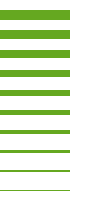https://doi.io-warnemuende.de/10.12754/data-2024-0018
doi:10.12754/data-2024-0018
© Author(s) 2024. This work is distributed
under "Creative Commons Attribution 4.0 International"
Nitrogen-fixing sulfate reducing bacteria in shallow coastal sediments under simulated resuspension (Version 1.0)
Contributor(s): Voss, Maren [ContactPerson]
Abstract. Nitrogen (N2) fixation by heterotrophic non-cyanobacterial diazotrophs is common in marine deep-sea sediments. However, in shallow coastal areas, where resuspension of sediments is extensive, the magnitude of sediment-associated N2 fixation during resuspension is unknown. We examined nitrogen fixation in dark slurry incubations with sediments (0–5 cm and 0–10 cm depths) under simulated resuspension from five shallow stations (water depth <1 m) and an anoxic site in the Bay of Gdansk (109 m) in the Baltic Sea. Abiotic variables and the composition of nitrogen fixing organisms (diazotrophs) were measured at the study sites. To estimate the contribution of nitrogen fixing sulfate reducing bacteria to total nitrogen fixation, parallel incubations with sodium molybdate as inhibitor were performed. Our data show low but variable nitrogen fixation rates (n.d. - 23.7 nmol N g-1 d-1), promoted in small-grained sediments associated with increased organic carbon content and high nutrient concentrations in pore waters. Highest nitrogen fixation at the shallow sites was encountered in the upper 0–5 cm of the sediments while rates were negligible below. Sulfate reducing bacteria (e.g. Desulfobacterales and Desulfovibrionales) were responsible for most of the heterotrophic nitrogen fixation and appear as key players for pelagic N2 fixation during resuspension. Our study reveals an important sediment – water coupling, which may be accentuated by the increased storms and resuspension events predicted for the Baltic Sea region.
Scientific purpose: The study determined heterotrophic N2 fixation mediated by sulfate reducing bacteria or other microbes and microbial community composition in surface sediments from the coastline of the southern Baltic Sea.
